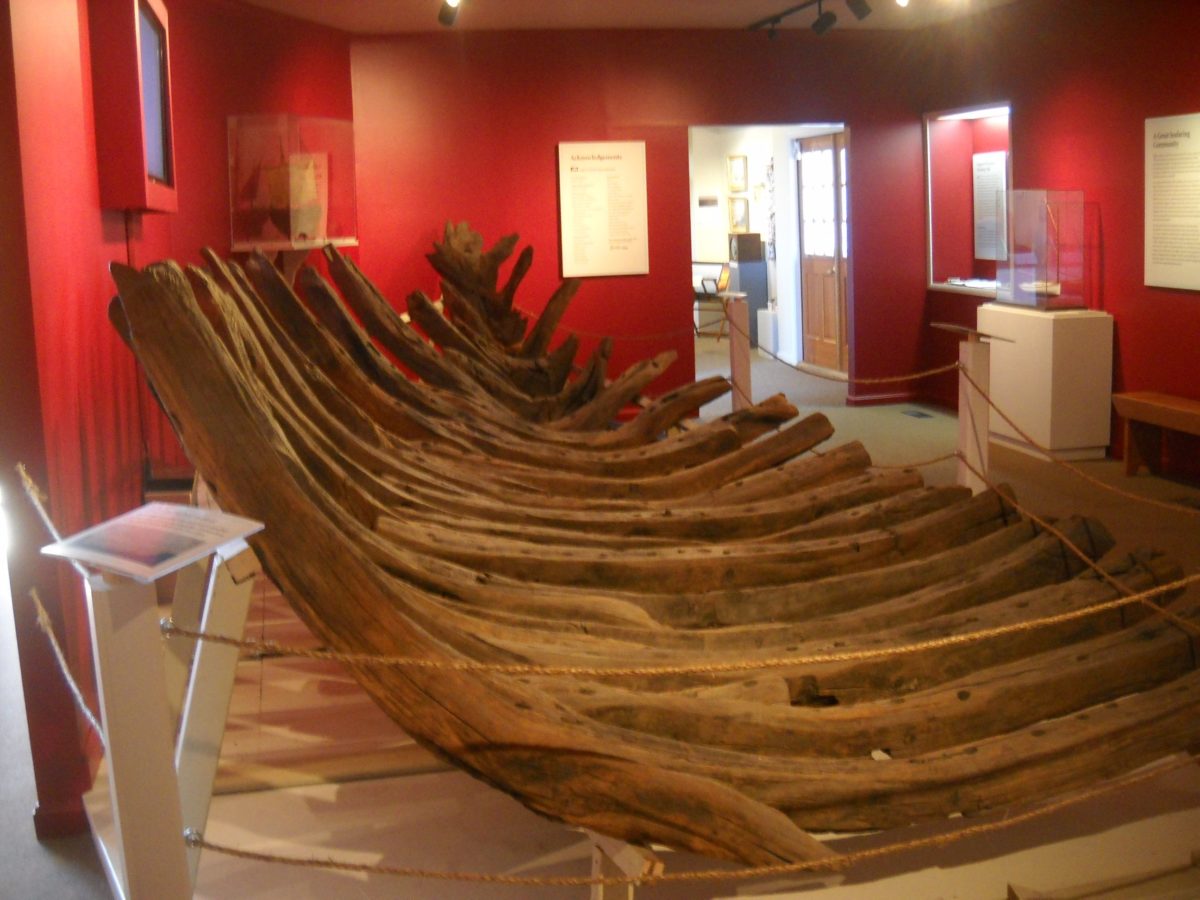The outer beach of Cape Cod has long been infamous for its treacherous waters and more than three thousand shipwrecks are known to have occurred in these waters since such events were recorded. The first recorded shipwreck occurred in the waters off of the future Orleans in the winter of 1626.
 Earlier in 1626, two London entrepreneurs, John Fells and John Sisbey, set out to make their fortune in the new world, intent on raising tobacco in the Jamestown colony. They hired a Scottish Captain named Johnston, assembled a crew of Irish farmers (likely indentured servants) and secured a small ship of 45 feet, which was to become known as the Sparrowhawk.
Earlier in 1626, two London entrepreneurs, John Fells and John Sisbey, set out to make their fortune in the new world, intent on raising tobacco in the Jamestown colony. They hired a Scottish Captain named Johnston, assembled a crew of Irish farmers (likely indentured servants) and secured a small ship of 45 feet, which was to become known as the Sparrowhawk.
On the way to Jamestown, the Sparrowhawk encountered a fierce winter storm and was wrecked on a sandbar off the coast of what we now call Pleasant Bay. The crew made it to shore where they received assistance from Native Americans from the Nauset Tribe. Word was passed to Plymouth Governor William Bradford of their plight, and Bradford recorded the event in his journal. He led a rescue mission from Plymouth, landing at Namskaket Creek and traversing what is now Orleans via Arey’s Pond to the sight of the wreck.
The ship was repaired, but as fate would have it, it was hopelessly wrecked by another storm when Sisbey and Fells set out again for Jamestown. The crew of the Sparrowhawk was brought back to Plymouth for the duration of the winter. In the summer of 1627, after apparently wearing out their welcome, Sisbey, Fells, Johnston, and the crew were given passage to Jamestown on two barks. The wreckage of the Sparrowhawk became victim of the shifting sandbars off Nauset Beach and disappeared under the sand for more than 200 years.
On May 6, 1863, Orleans residents Solomon Linnell and Alfred Rogers discovered the Sparrowhawk’s recently uncovered skeleton. It is notable that Linnell, after discovering the remains of one shipwreck, went on to become the first Keeper (Captain) of the Orleans Lifesaving Station in 1872. Linnell, Rogers, and several other Orleans residents were responsible for pulling the planks and timbers above the high-water mark later that summer. The remains were taken to the premises of Leander Crosby, and then shipped to Boston where the pieces were re-assembled and displayed on Boston Common.
Orleans resident Charles Linnell financed the transport of the remains to Boston. James Sparrow, whose family settled in the area of the wreck in 1675, attributed the name Sparrowhawk to the ship, citing a family legend. While we still attribute the name Sparrowhawk to the ill-fated ship, it is unlikely that this was her actual name.
The Sparrowhawk was later displayed at the Pilgrim Hall Museum in Plymouth, then the Maritime Museum in Hyannis. It is currently back at Pilgrim Hall where a recent scientific study provided further authentication that the remains that were recovered in 1863 are from the shipped that wrecked off Pleasant Bay in 1626. While the saga of the Sparrowhawk spans London, Orleans, Plymouth, and Jamestown, it is a key piece of Orleans History. We should make every effort to recognize it and incorporate it in our heritage.
